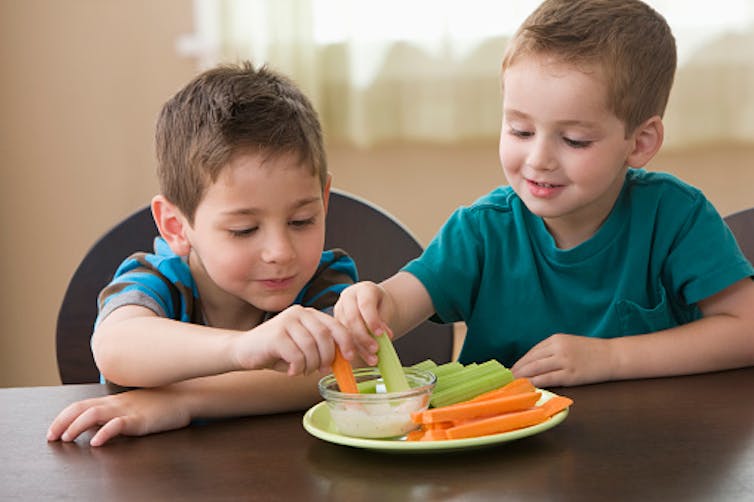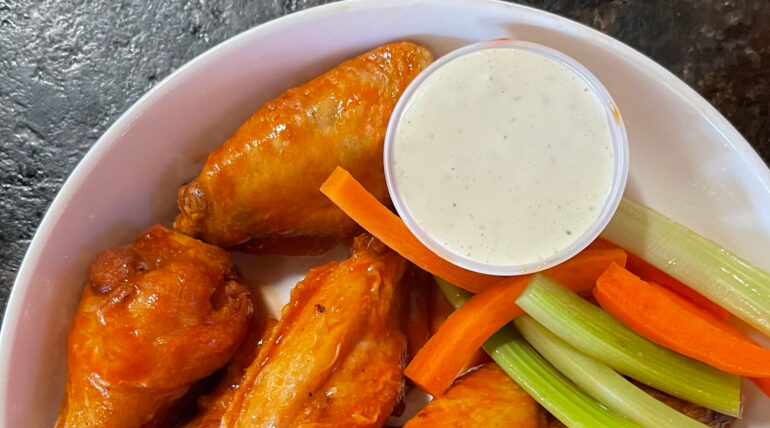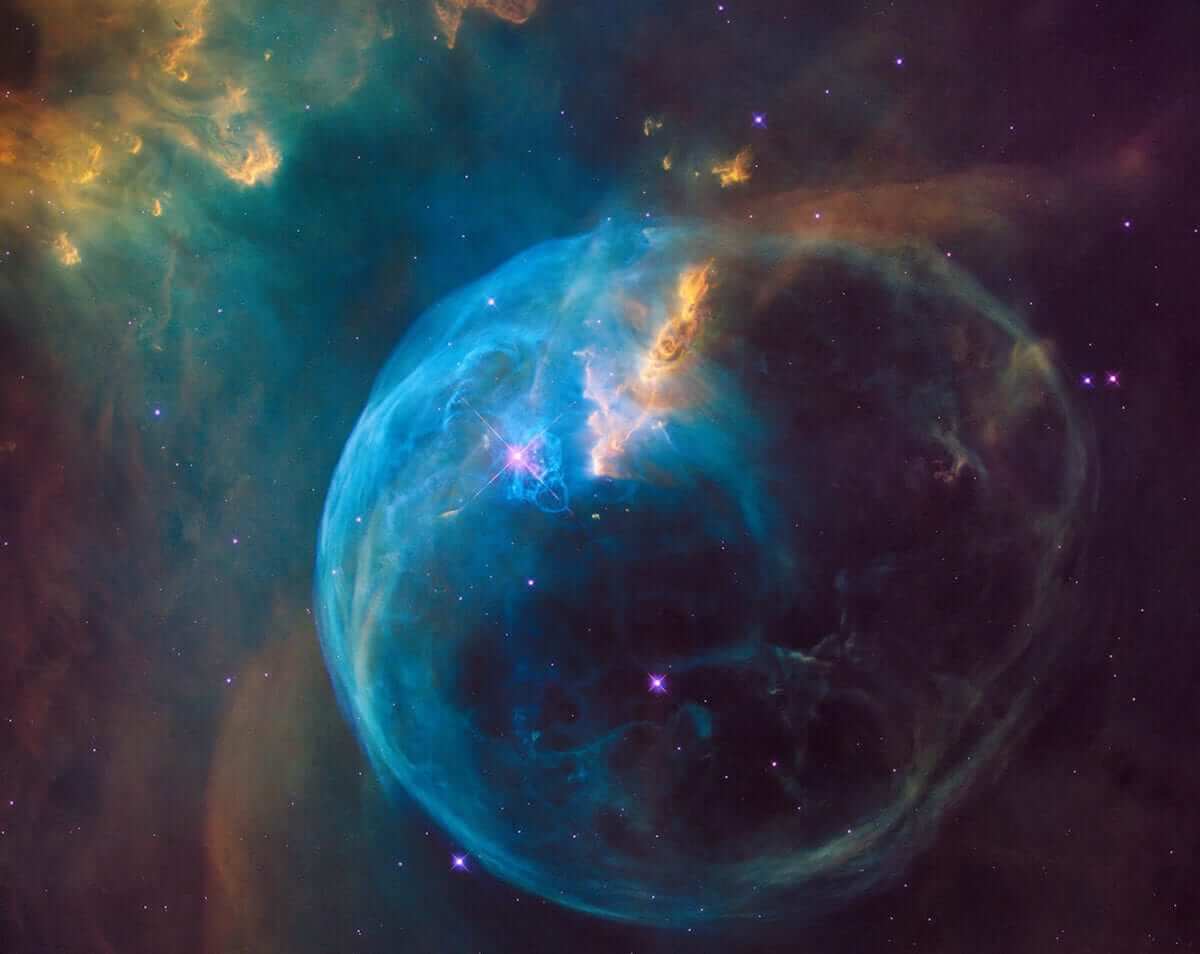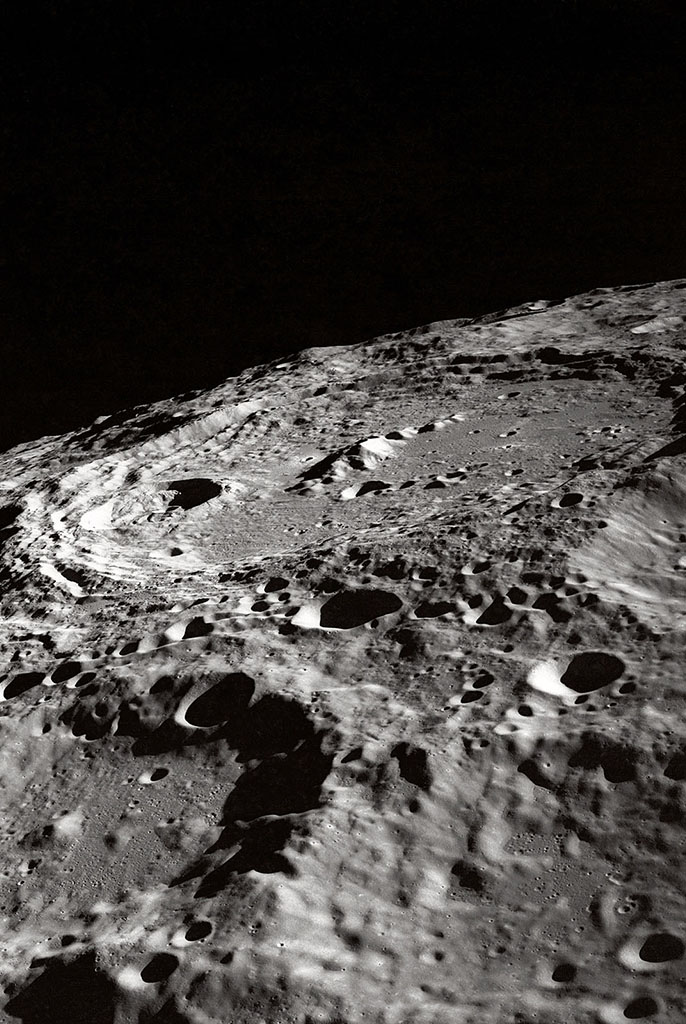
Curious Kids is a series for children of all ages. If you have a question you’d like an expert to answer, send it to [email protected].
Is ranch dressing a liquid or a solid? – Gabriel, age 8, DeLand, Florida
Imagine you’re eating dinner. You try to pour some ranch dressing onto your plate to dip your veggies into. You tip the container upside down, but nothing comes out. Seems like a solid.
So you shake the bottle up and down, and a big blob of dressing plops out and hits your plate. Seems like a liquid.
But the dressing doesn’t spread all over the plate, like milk or any other liquid would if you spilled it. Rather, it maintains some shape, kind of like the veggies on your plate. Seems like a solid.
But every time you plunge your solid carrot or celery into the blob of dressing, it distorts the shape of the blob a bit. You can even smear and spread the blob around, but the shape and stiffness of the celery isn’t affected by this game. Seems like a liquid.
So, is ranch dressing a liquid and a solid? Or is it neither?
I’m a professor of physics and biophysics, and my research focuses on understanding squishy materials that have both liquid and solid properties. Physicists call these materials soft matter. In my lab, we investigate what makes biological materials such as skin and snot squishy – and how we can create bio-inspired materials that have the same fascinating properties. I also host a social media channel, Physics Mama, where my two boys and I ask and answer questions about the physics of everyday life.

Whatever it is, ranch makes a tasty snack.
Jose Luis Pelaez Inc/Digital Vision via Getty Images
The basic states of matter
To figure out what’s going on with ranch dressing, you need to understand what the different states of matter are and what makes each one unique. “Matter” is just the scientific word for “stuff,” and it is anything that is made up of the microscopic building blocks called atoms and that has mass.
You probably learned in school that there are three states of matter: solid, liquid and gas. Think ice cube, a puddle of water and fog. Maybe you also learned about a fourth state, known as plasma.
These different states are defined by how the extremely tiny molecules making up the matter interact with each other. These molecules are so small that you can’t see them with your naked eye. But their invisible interactions determine the properties of the materials that you can see.
Molecules in a solid are physically attached to each other in a way that keeps them from moving around relative to each other. This is what makes solids rigid and able to keep a fixed shape.
The molecules in a liquid, on the other hand, are not connected to each other. They can move around, slide past each other and mix themselves up. This freedom of movement is what allows a liquid to take the shape of…



